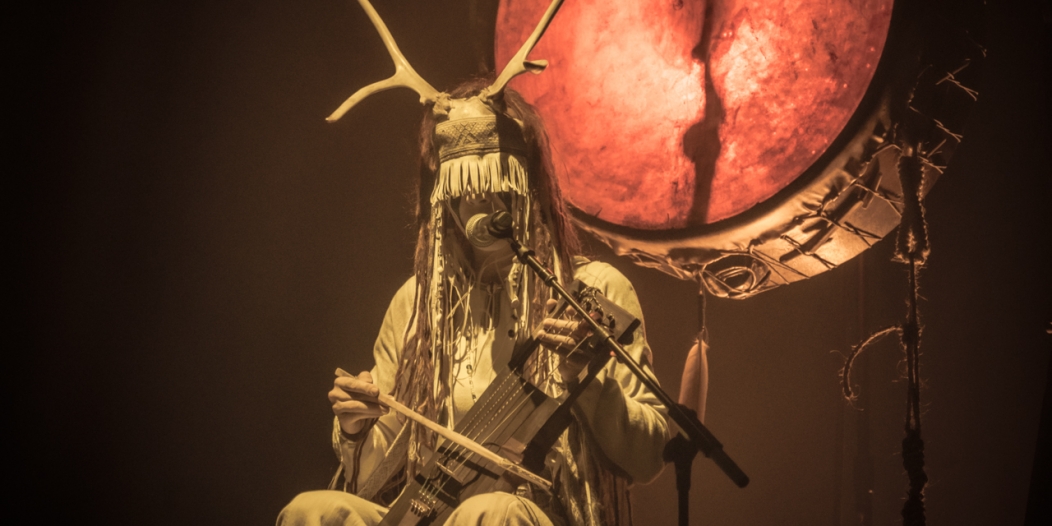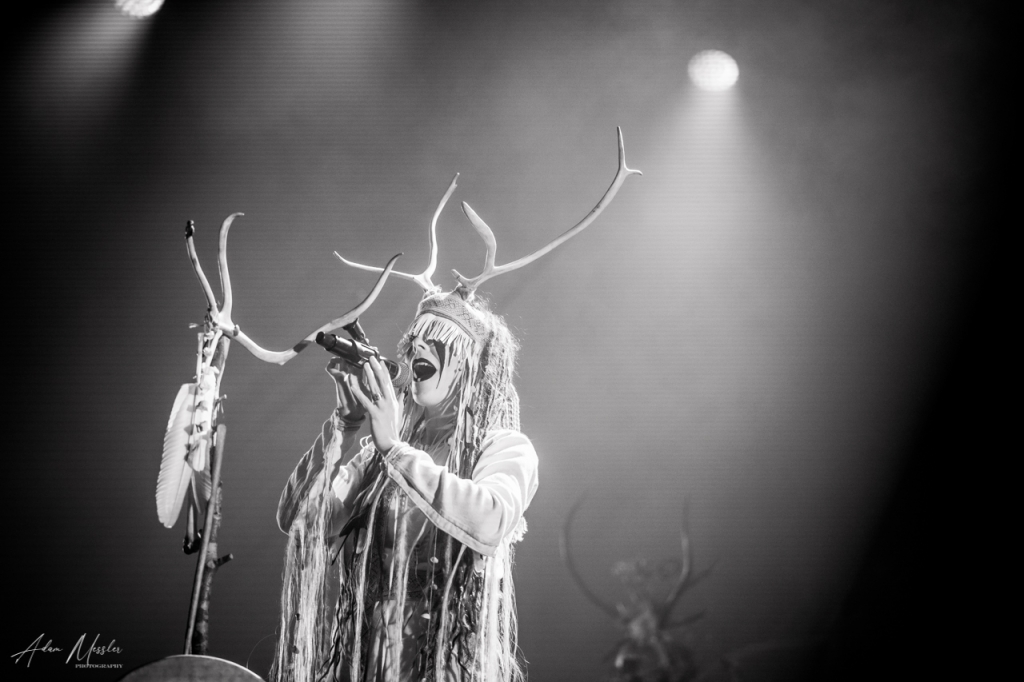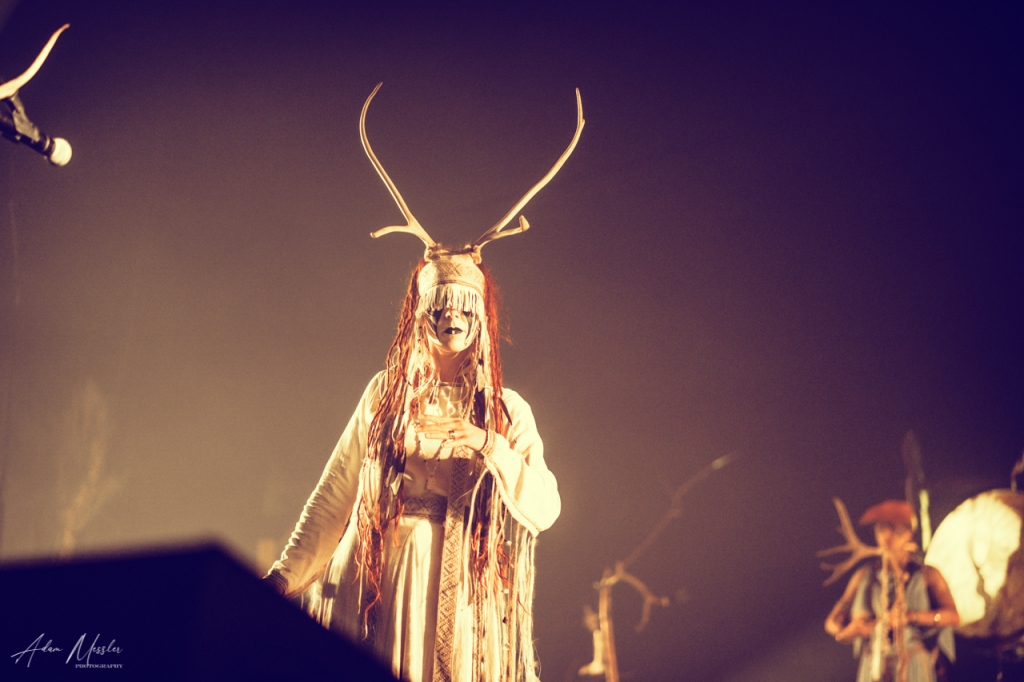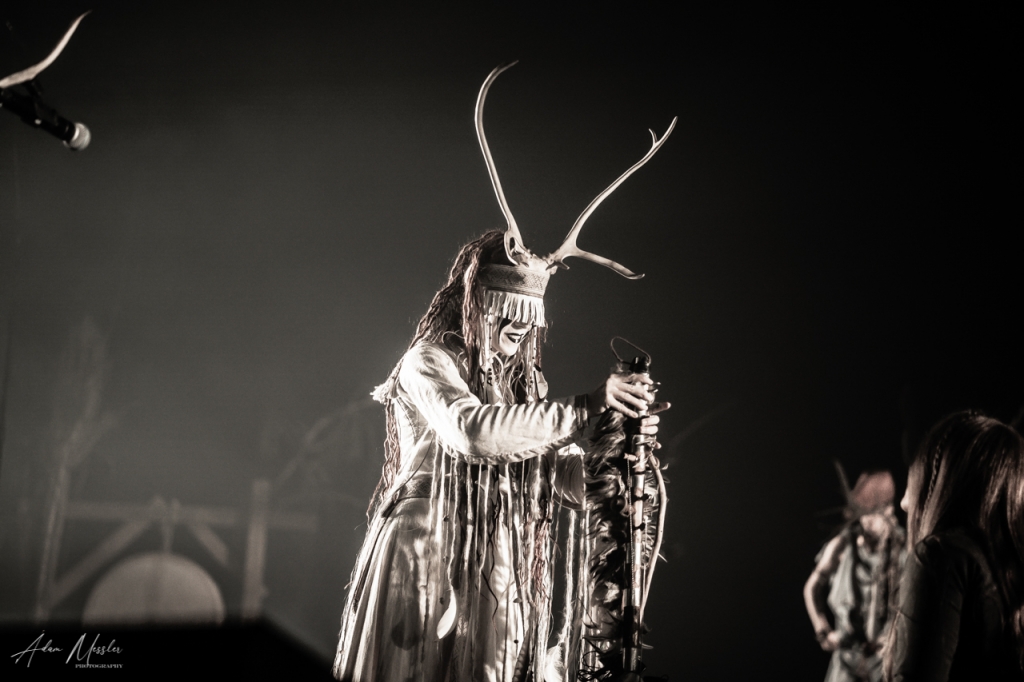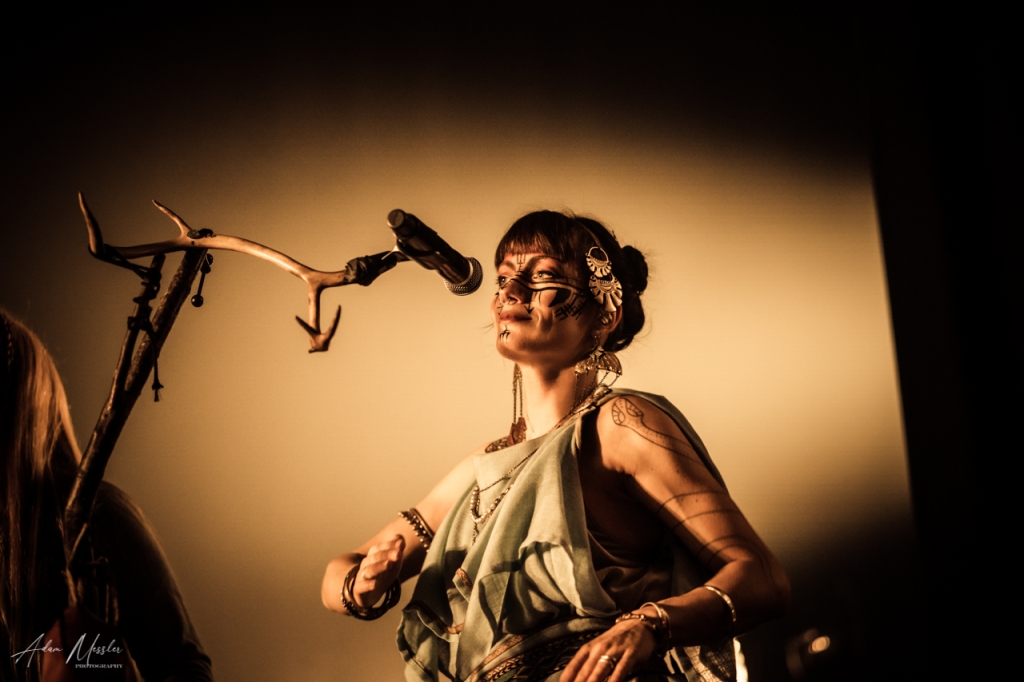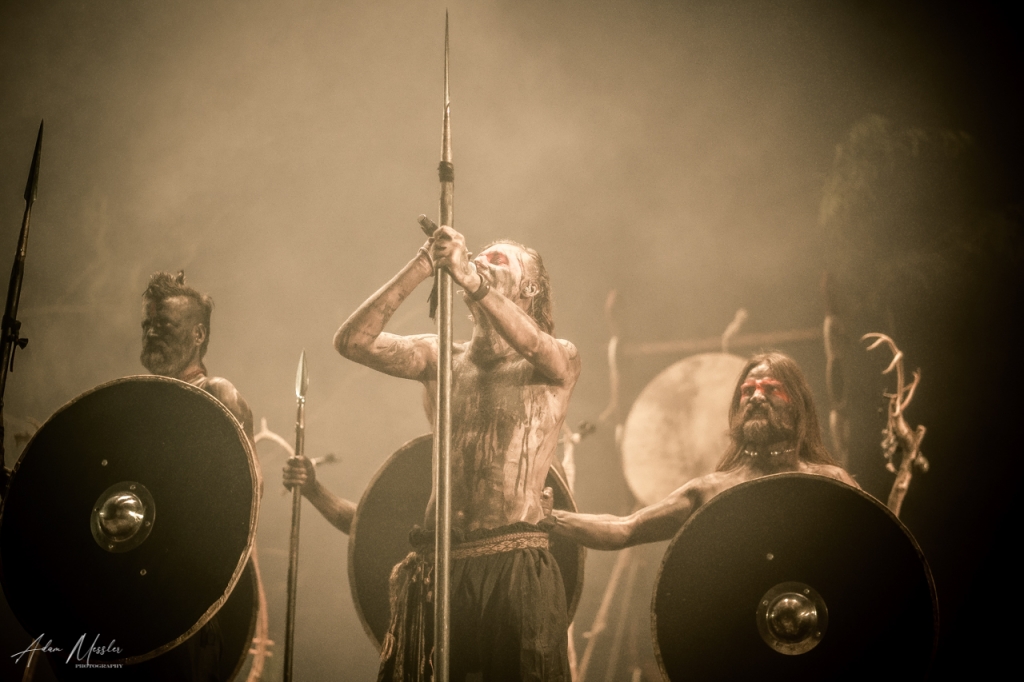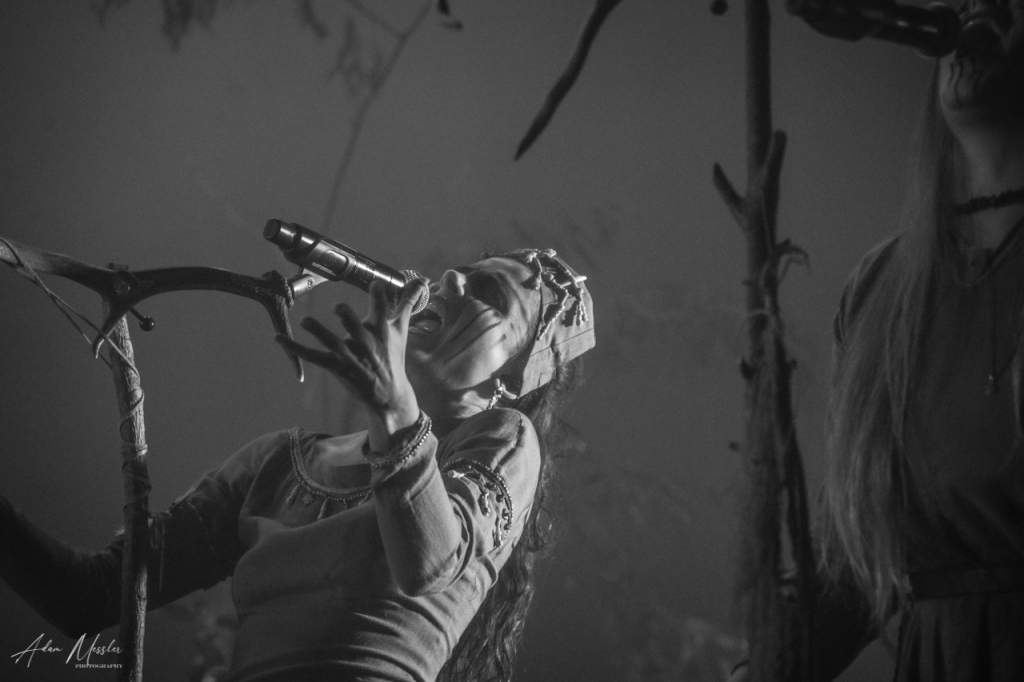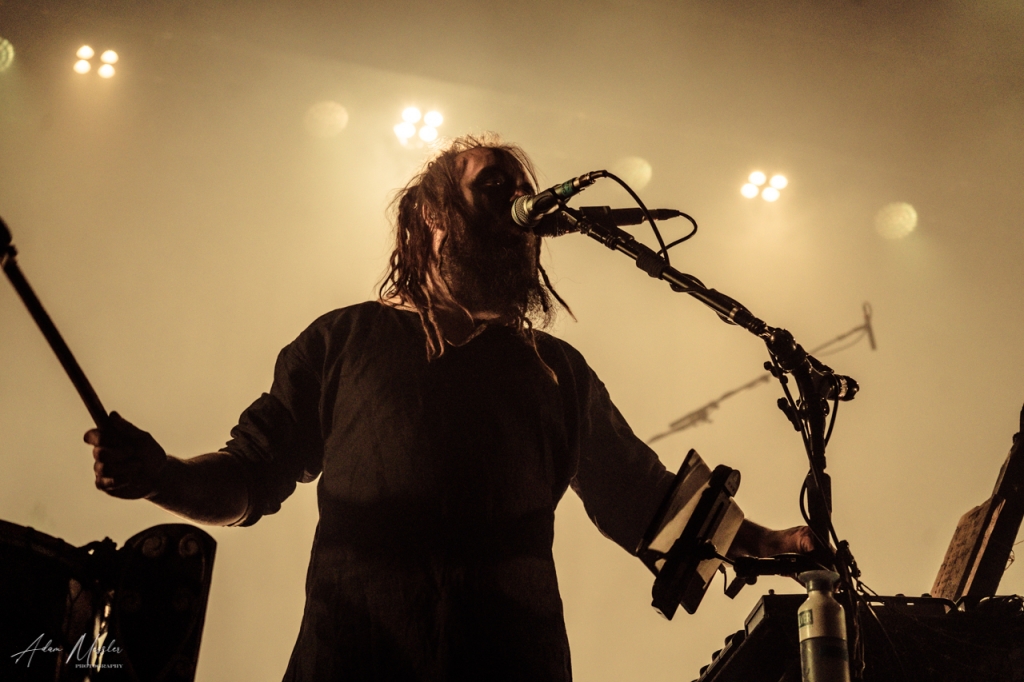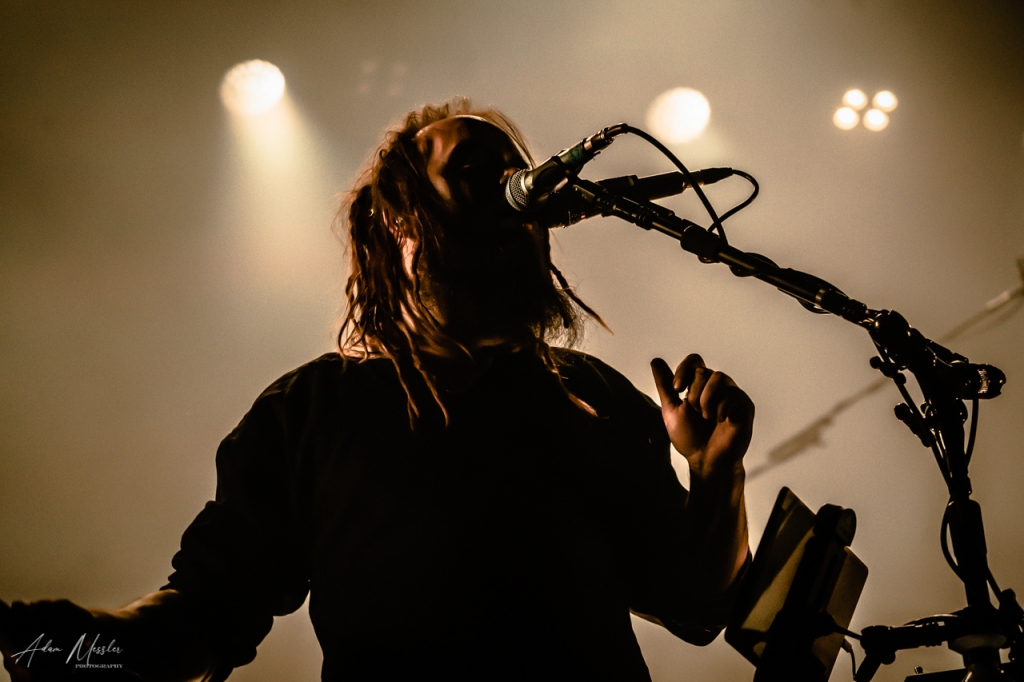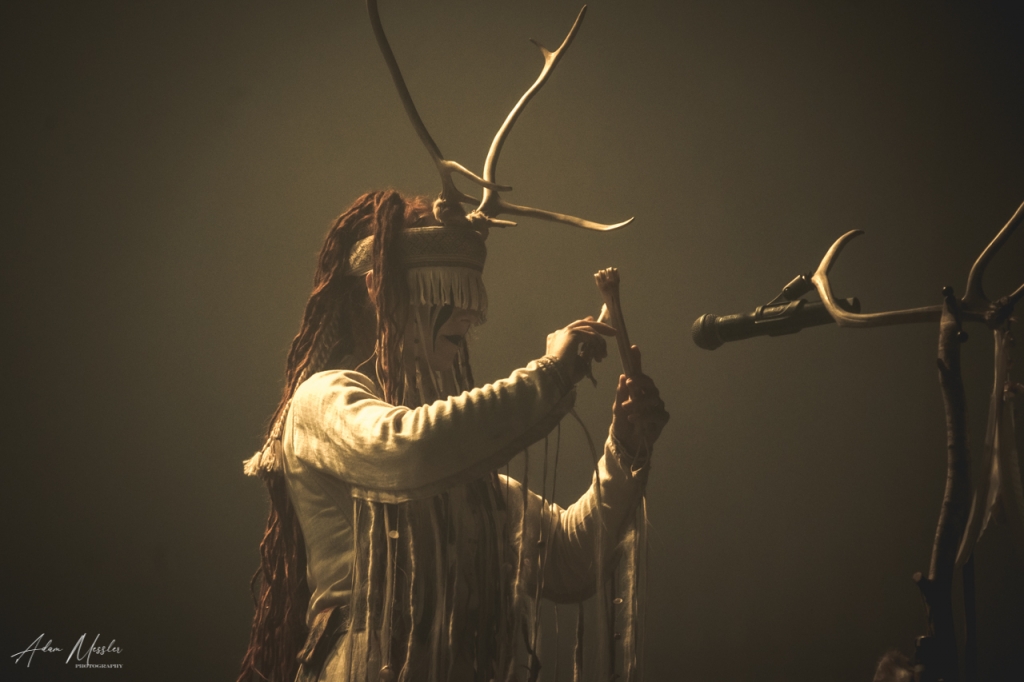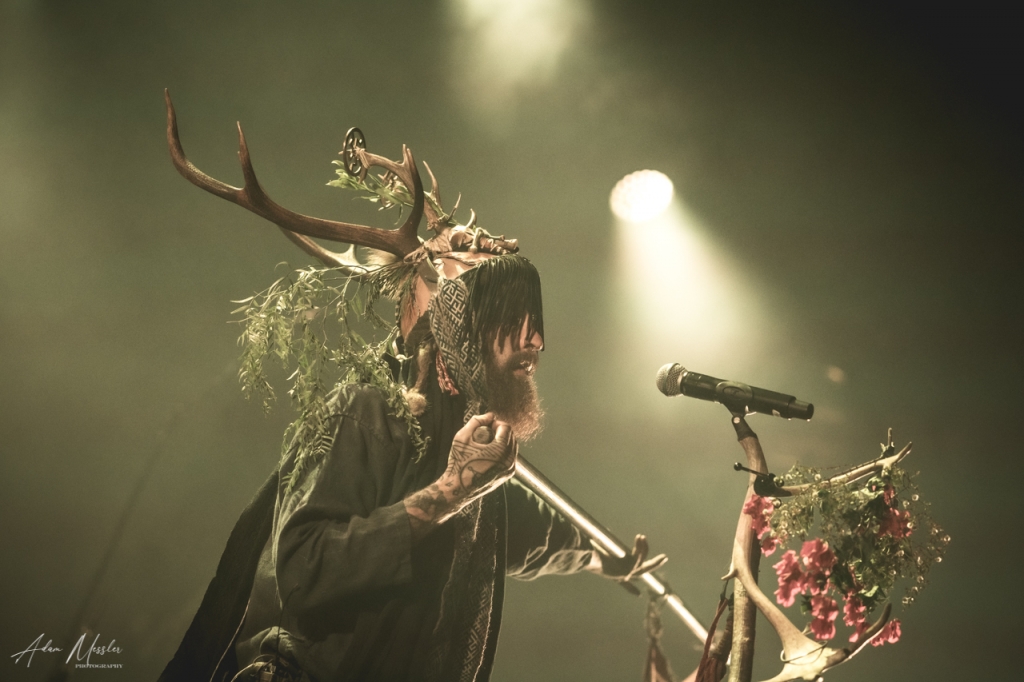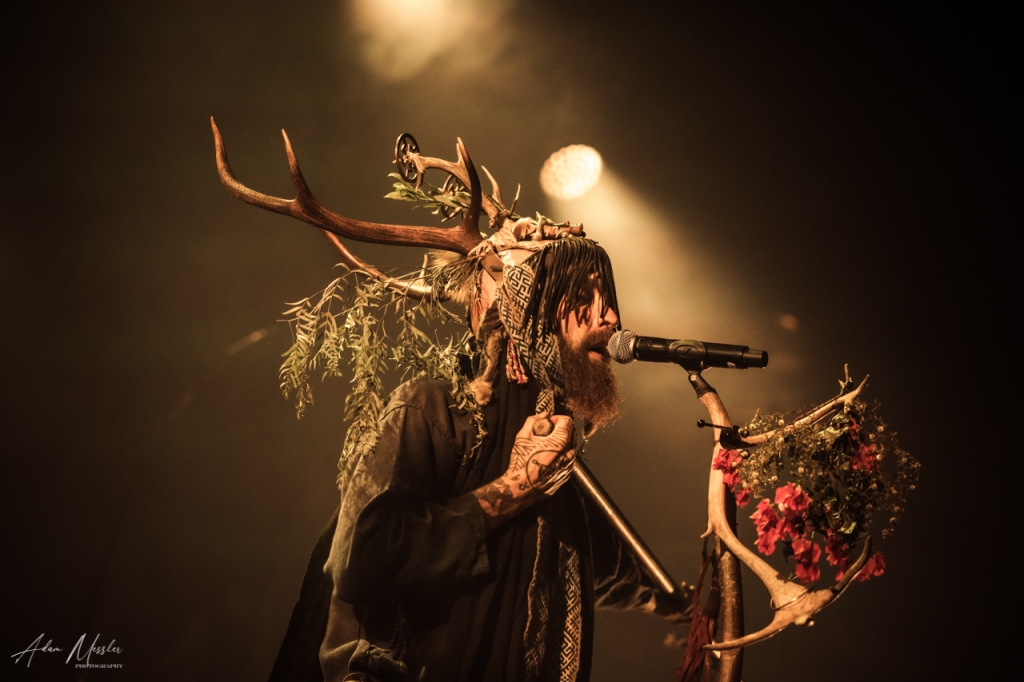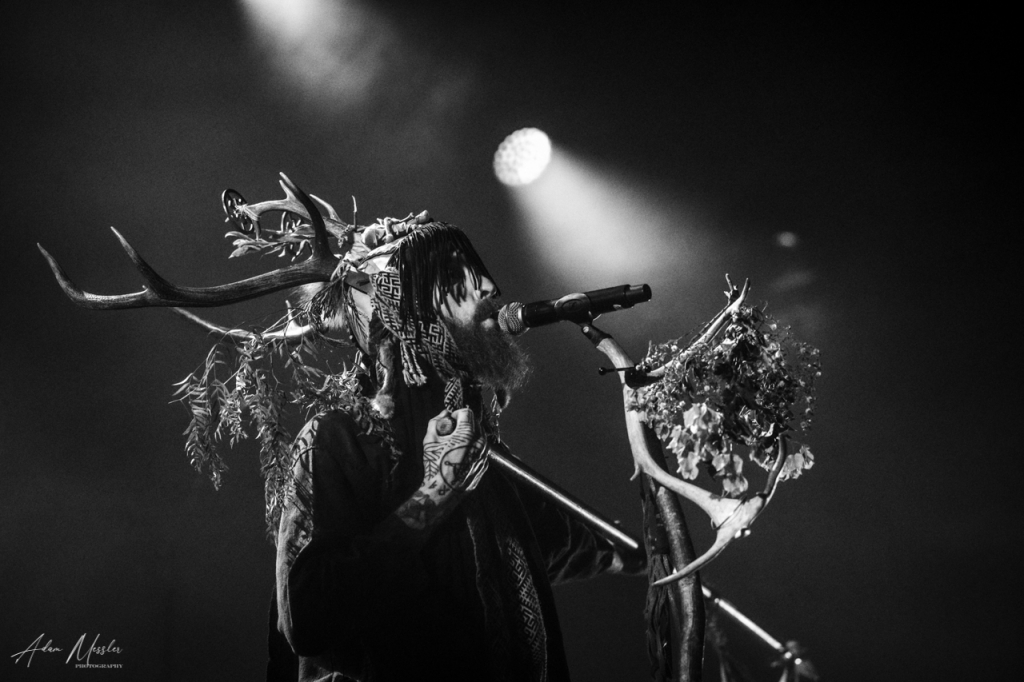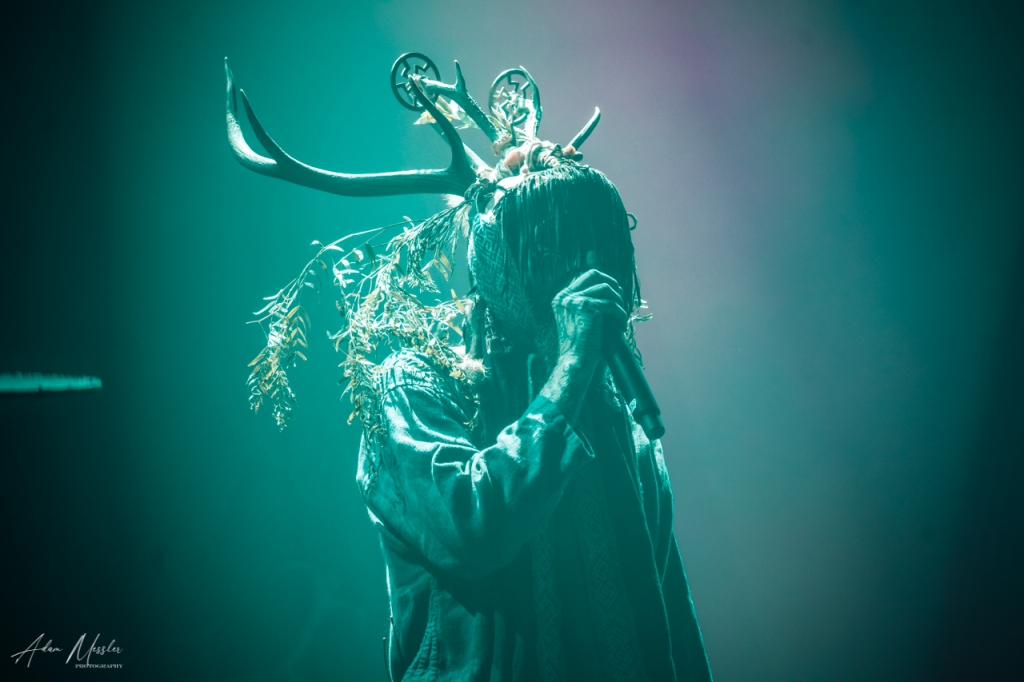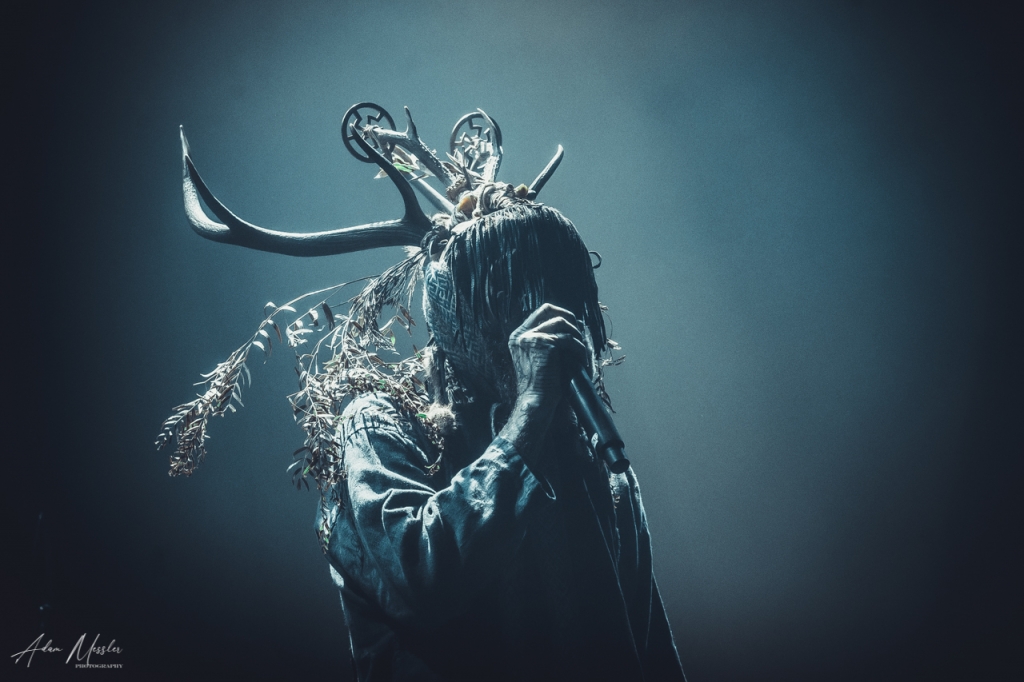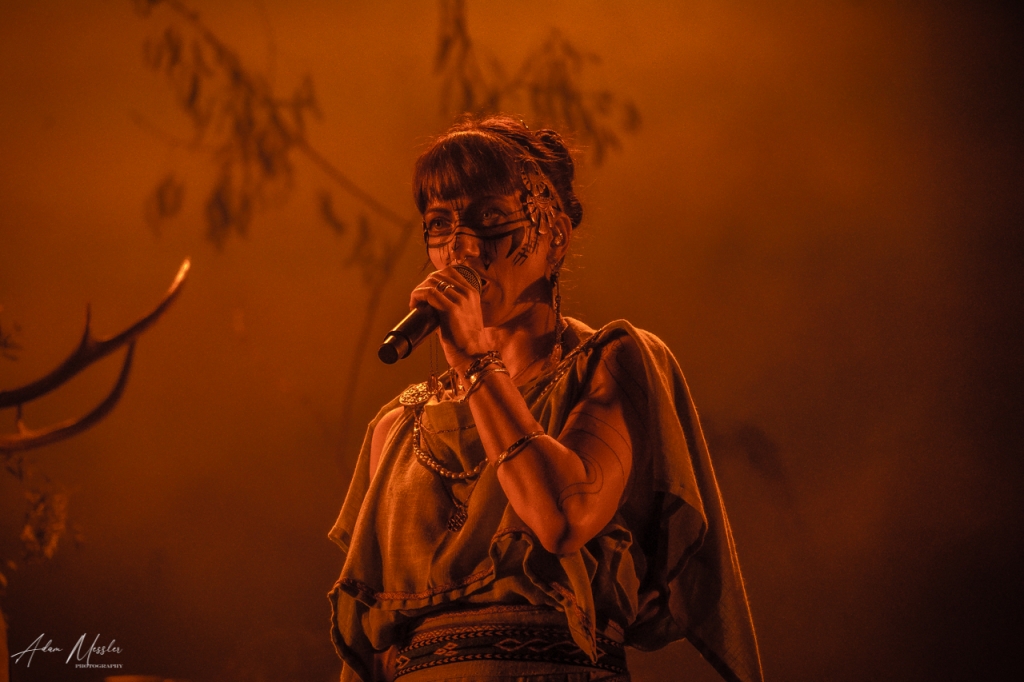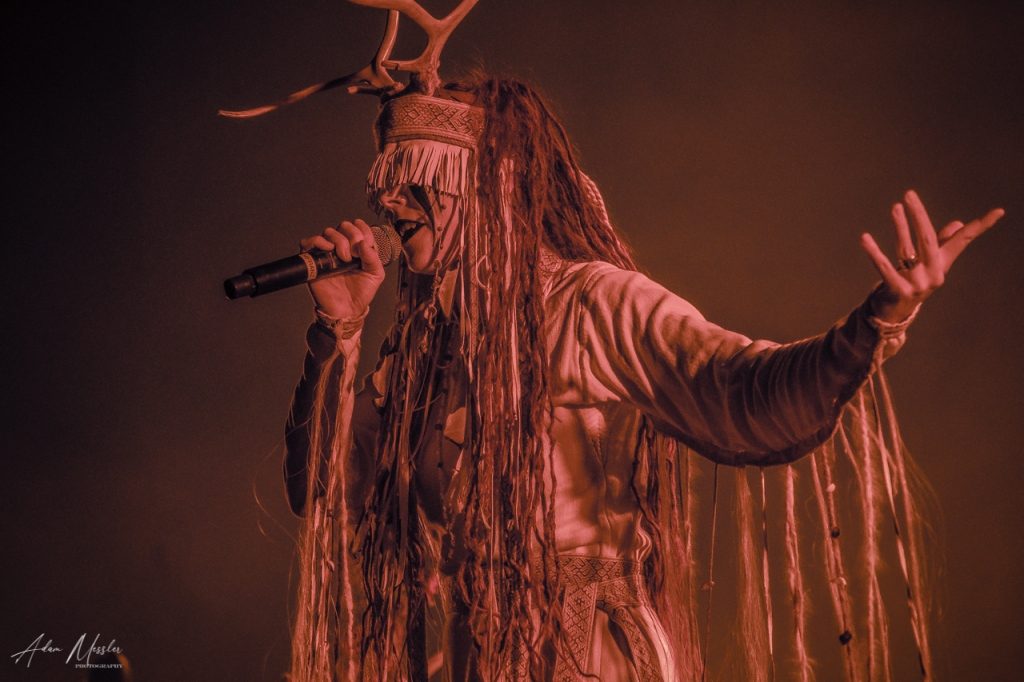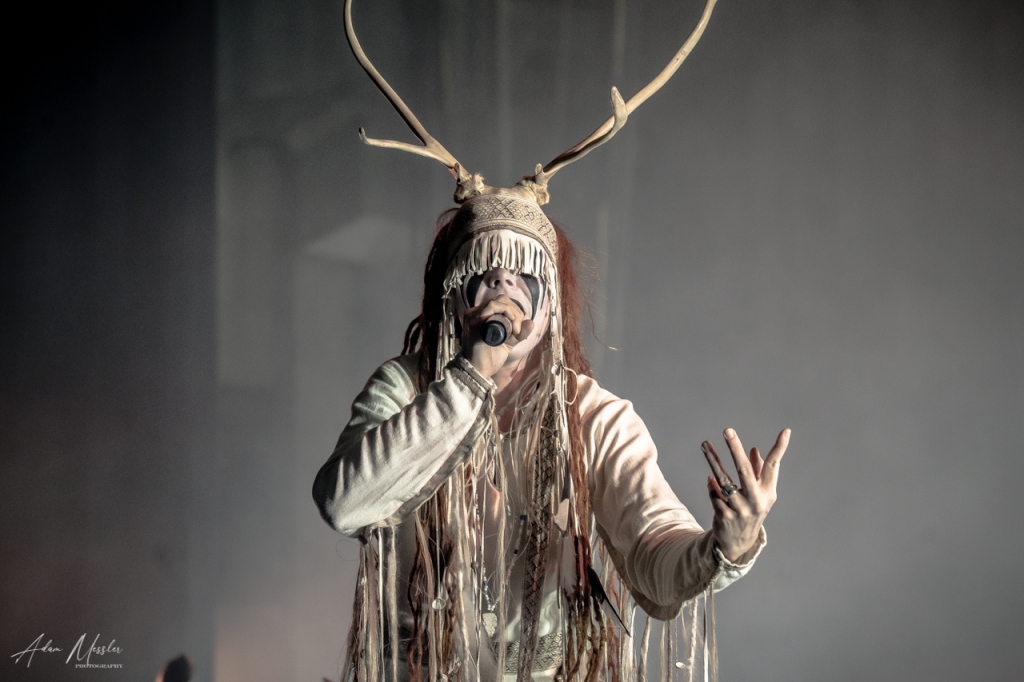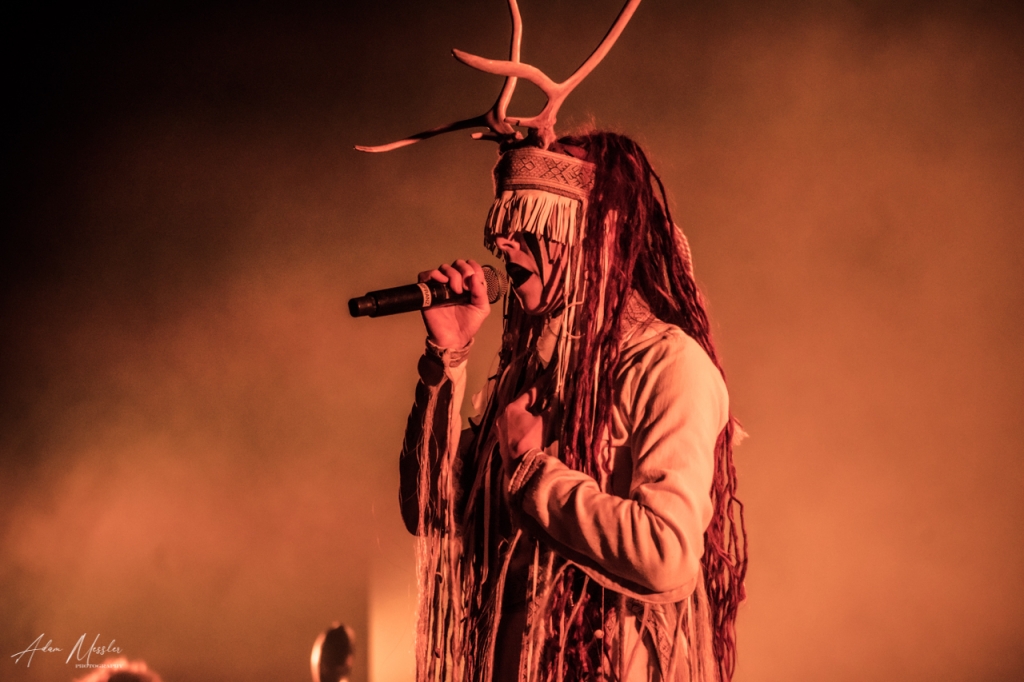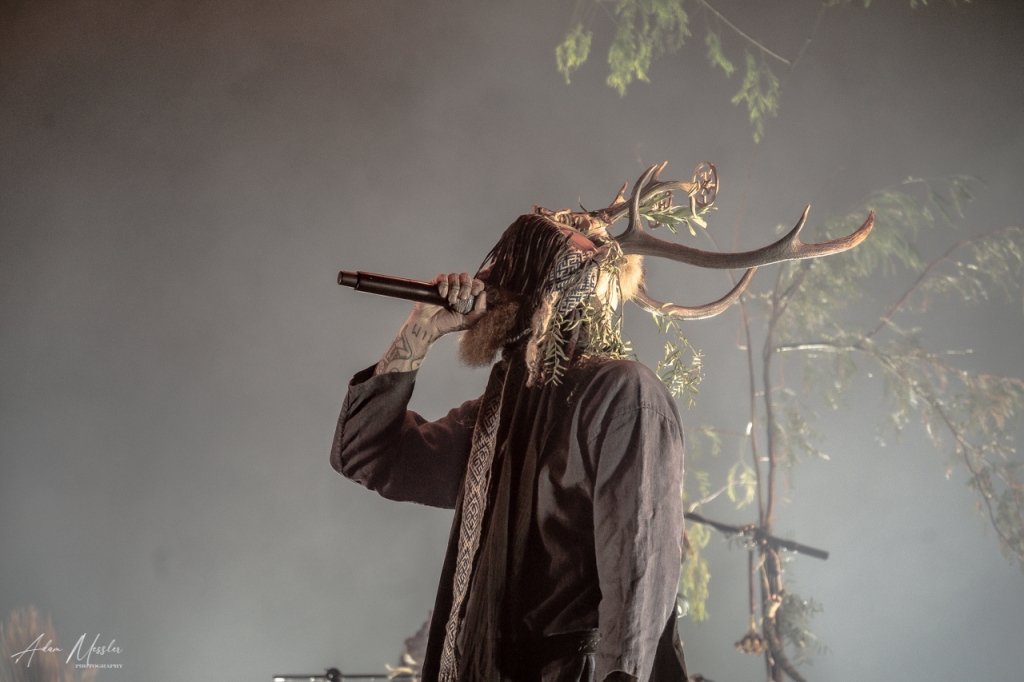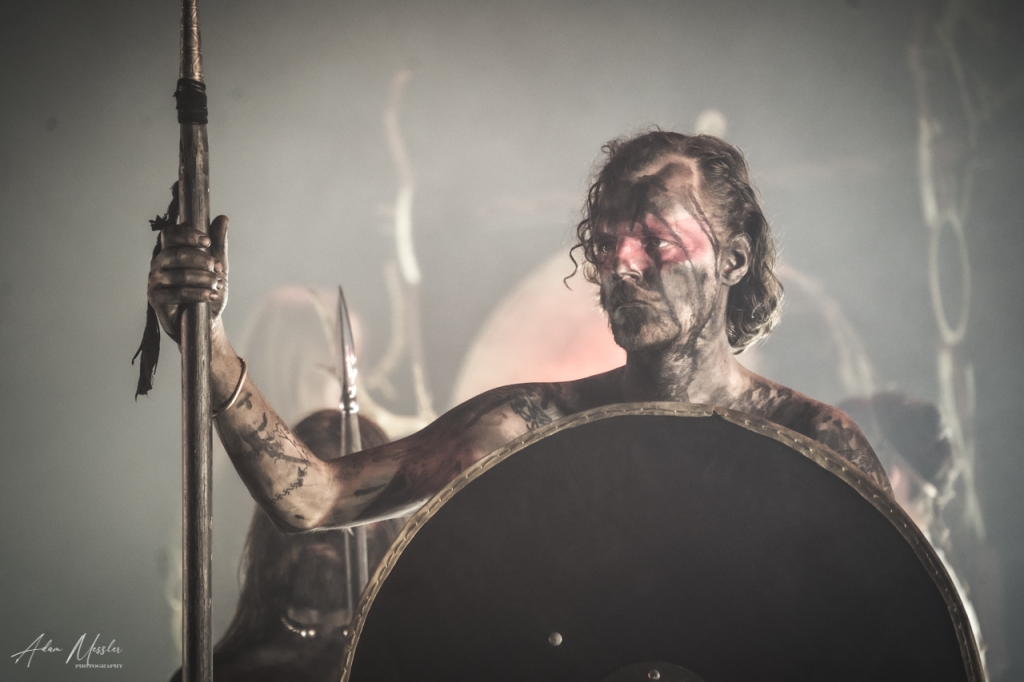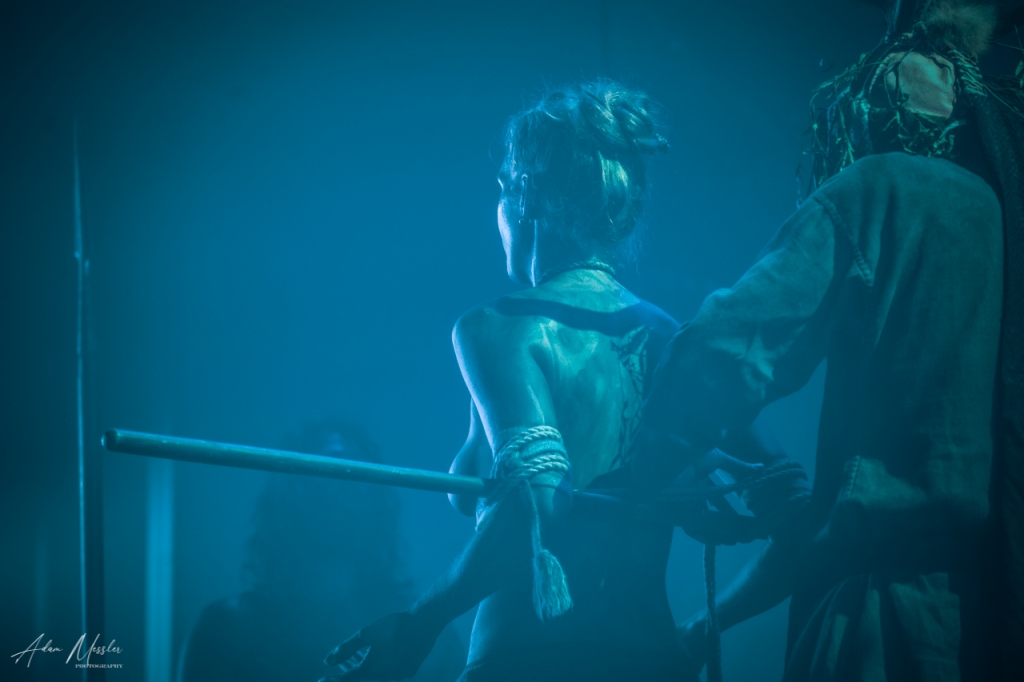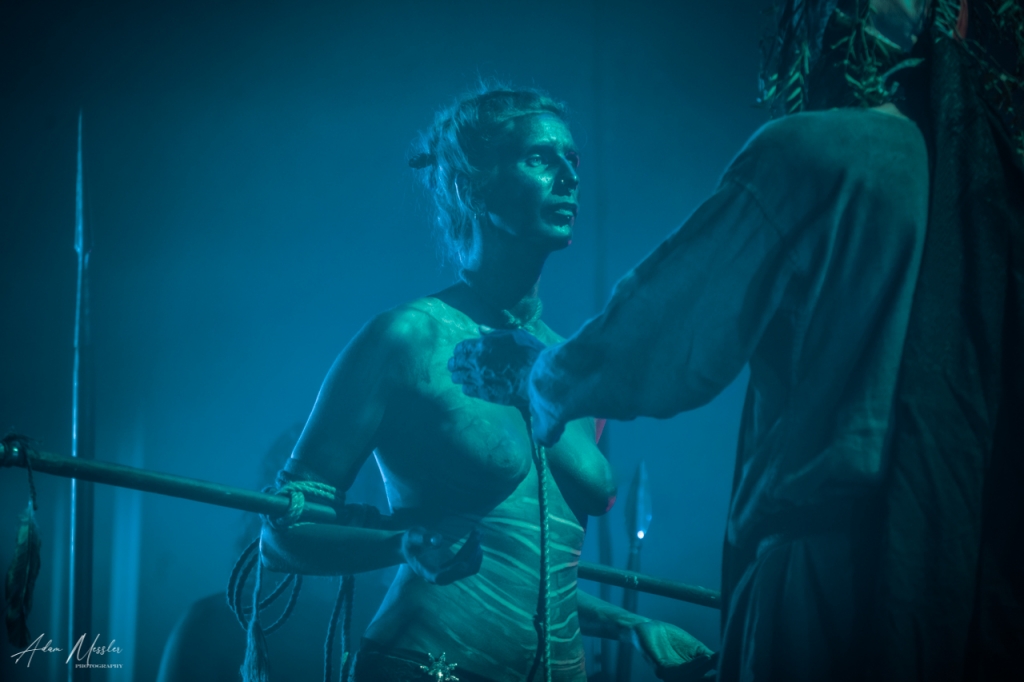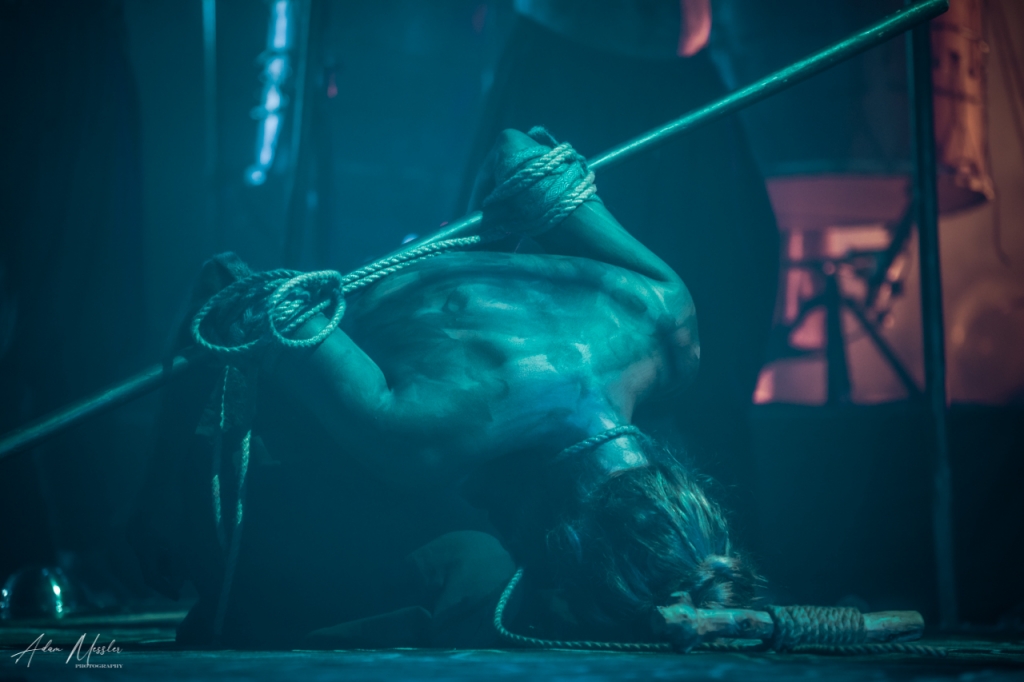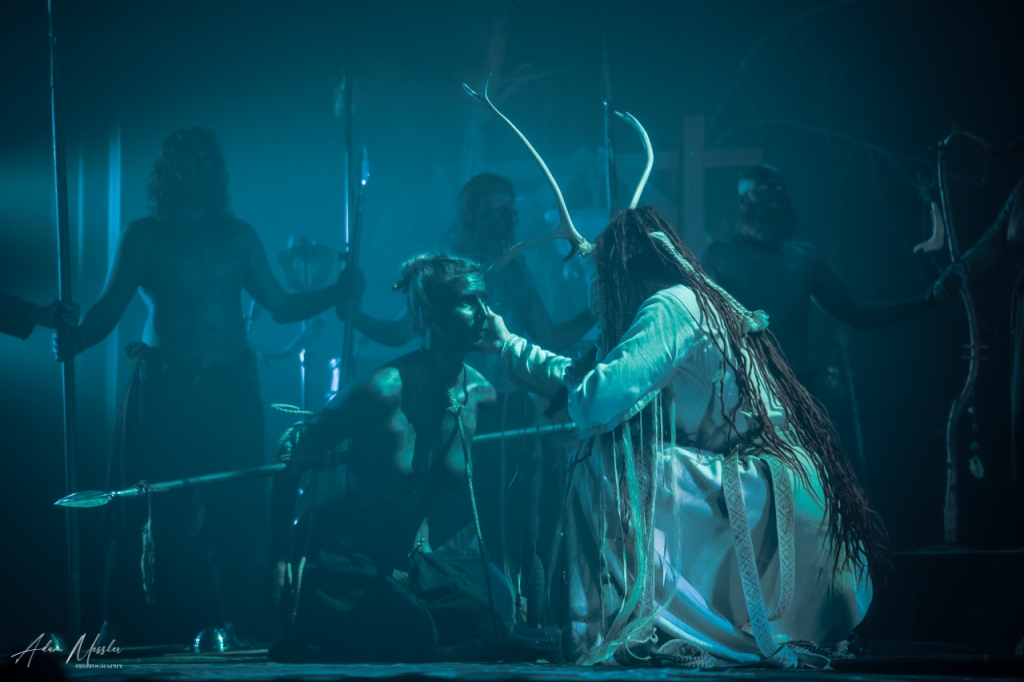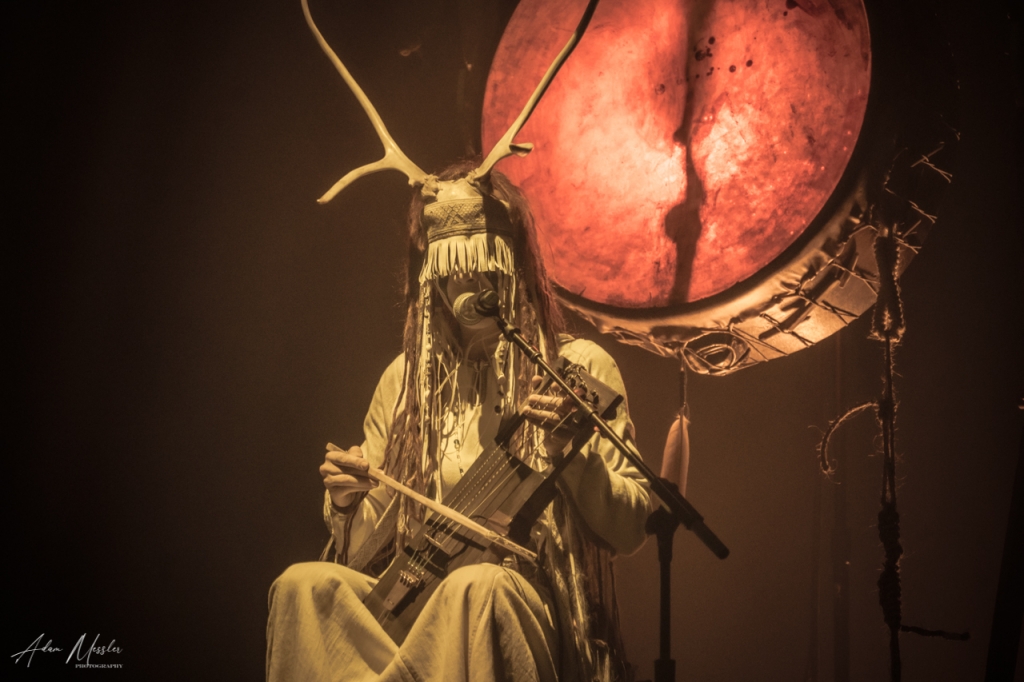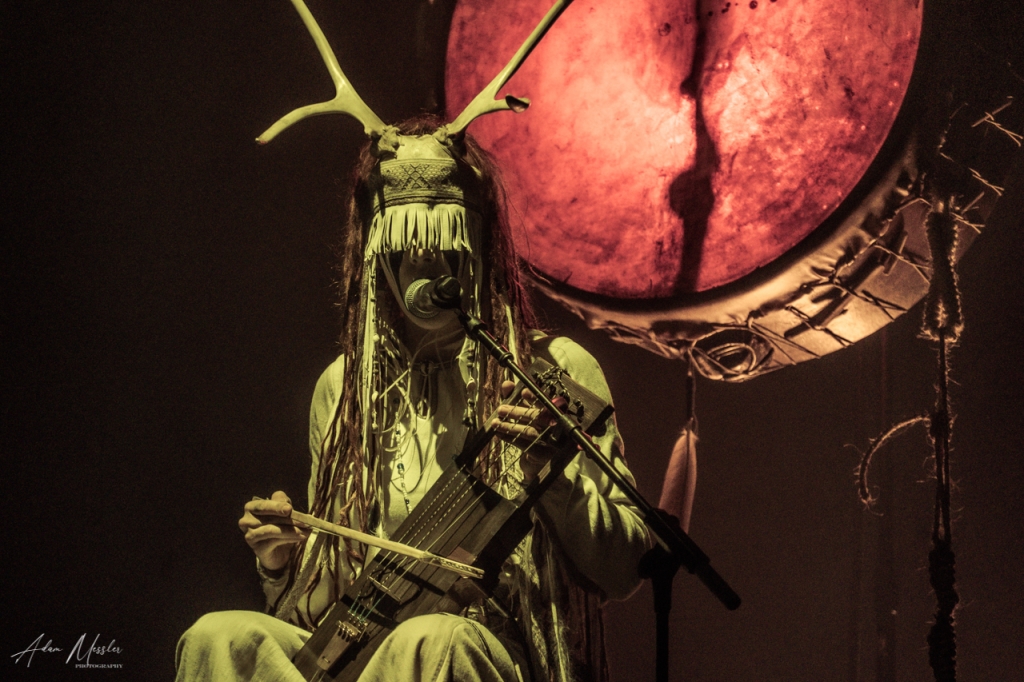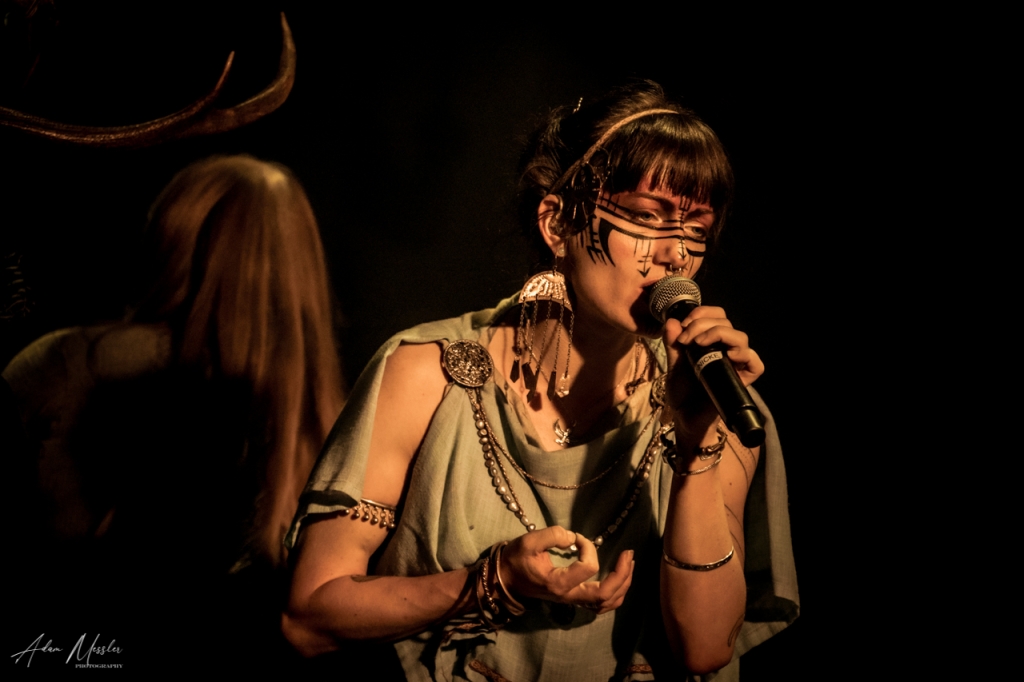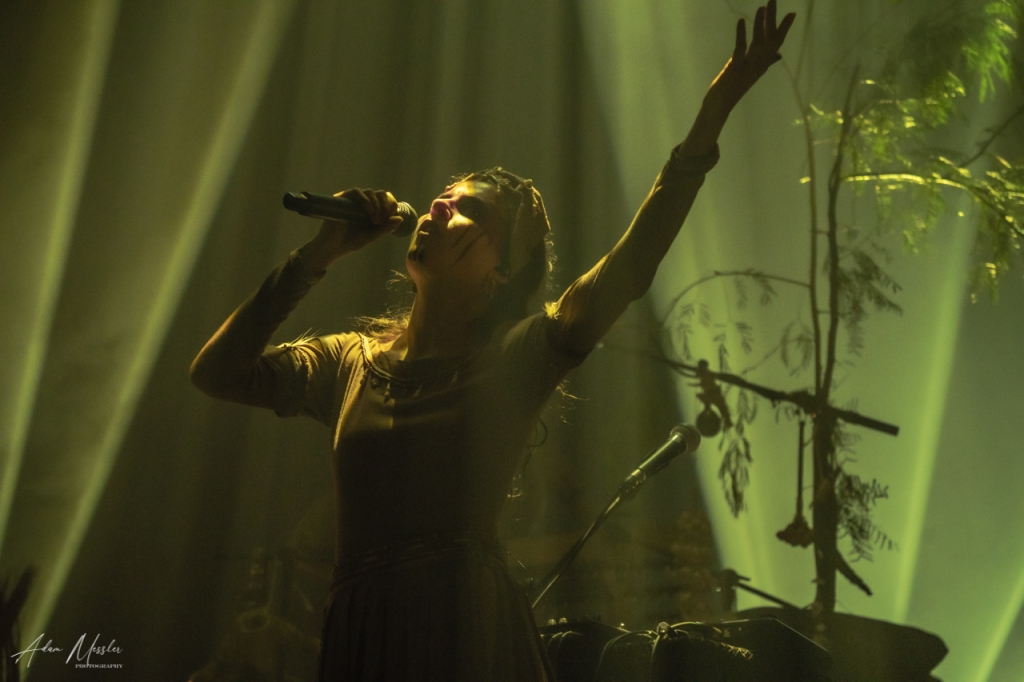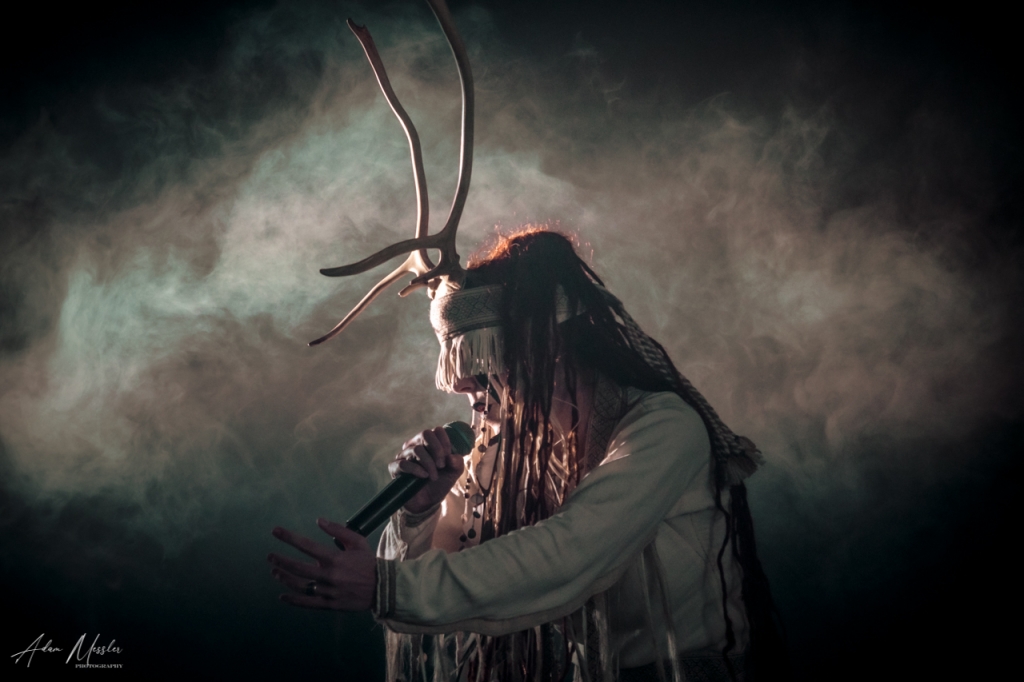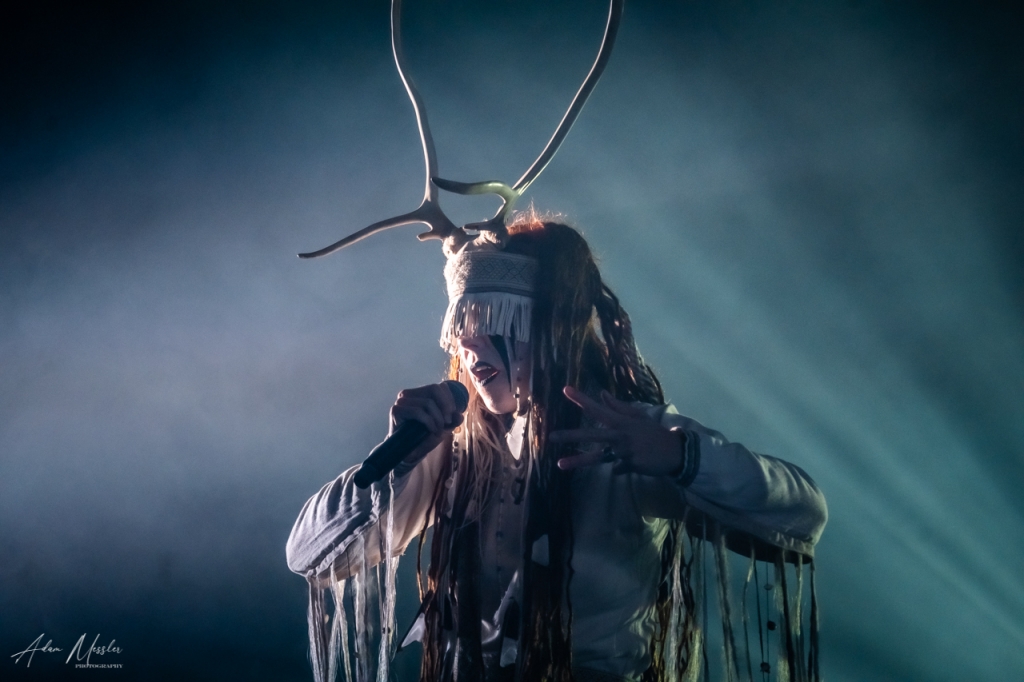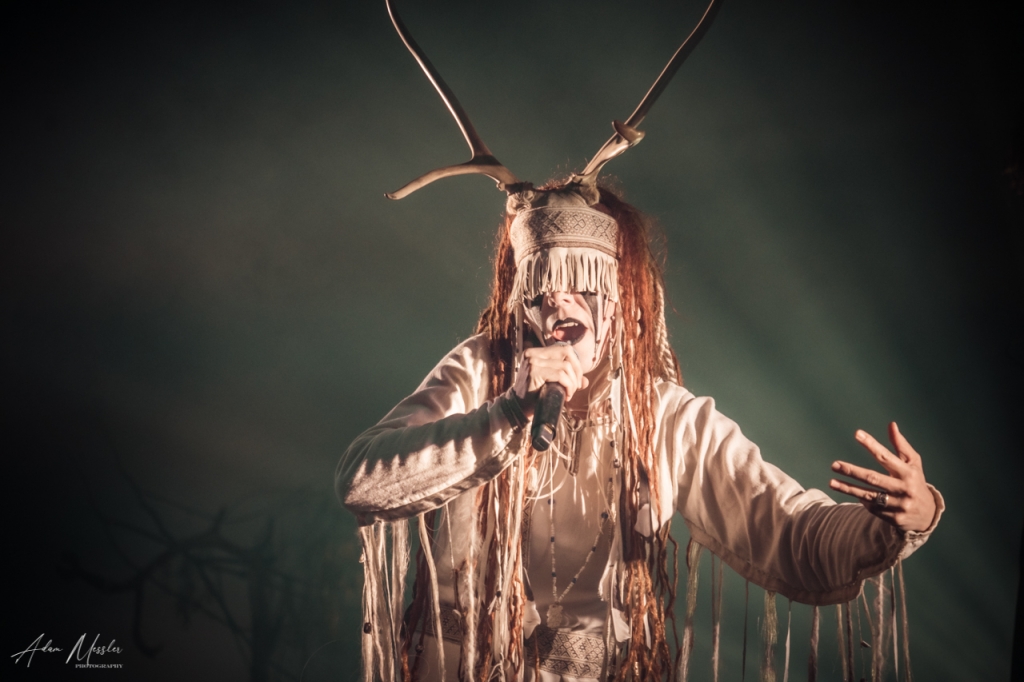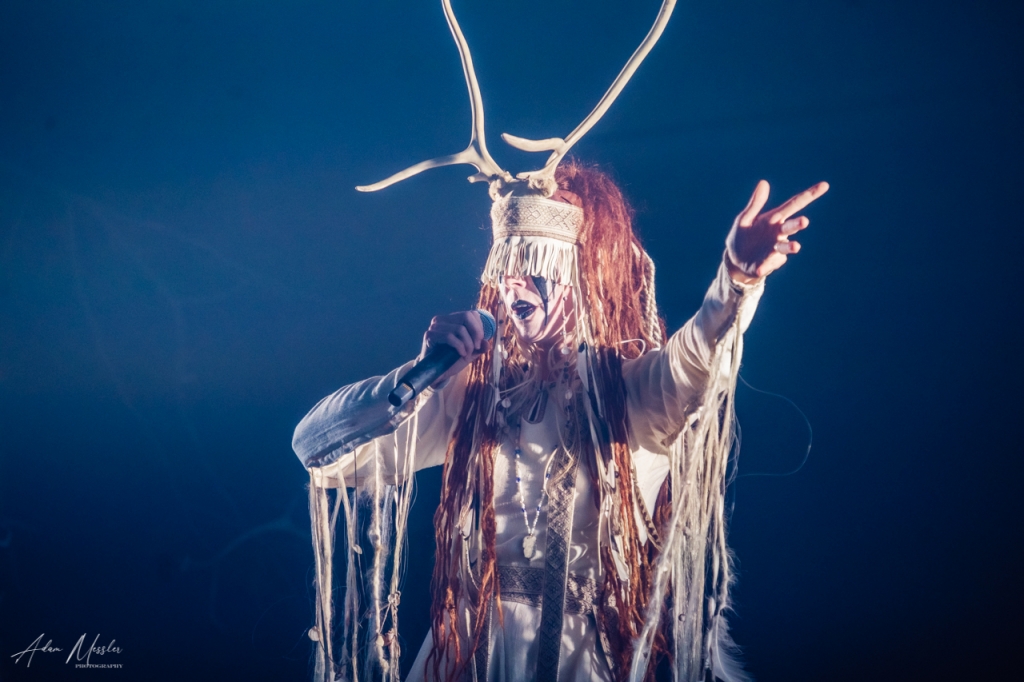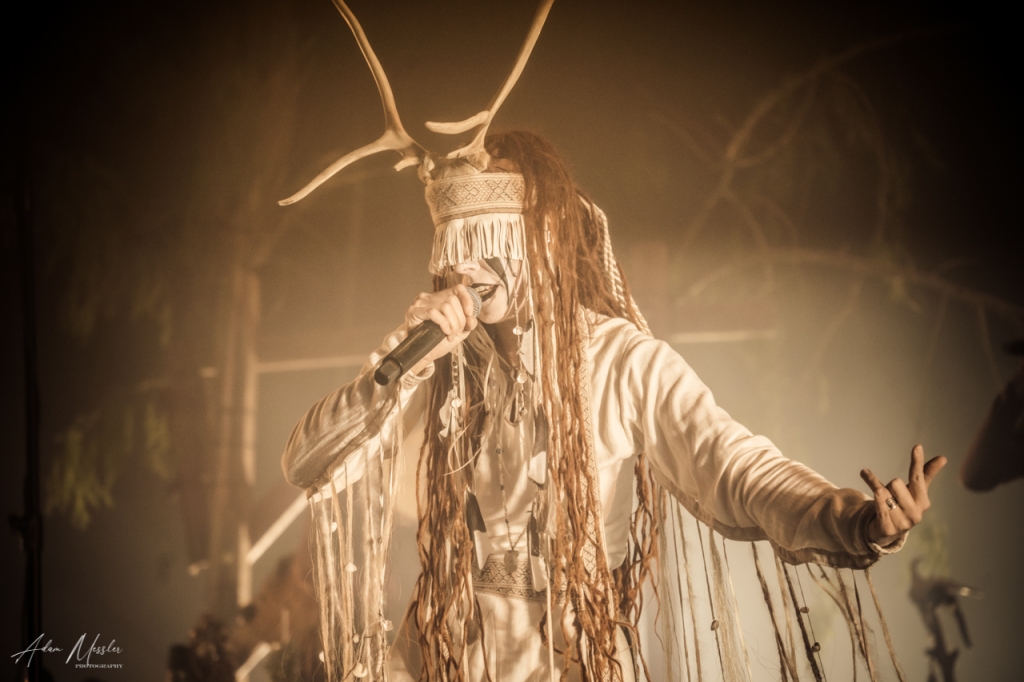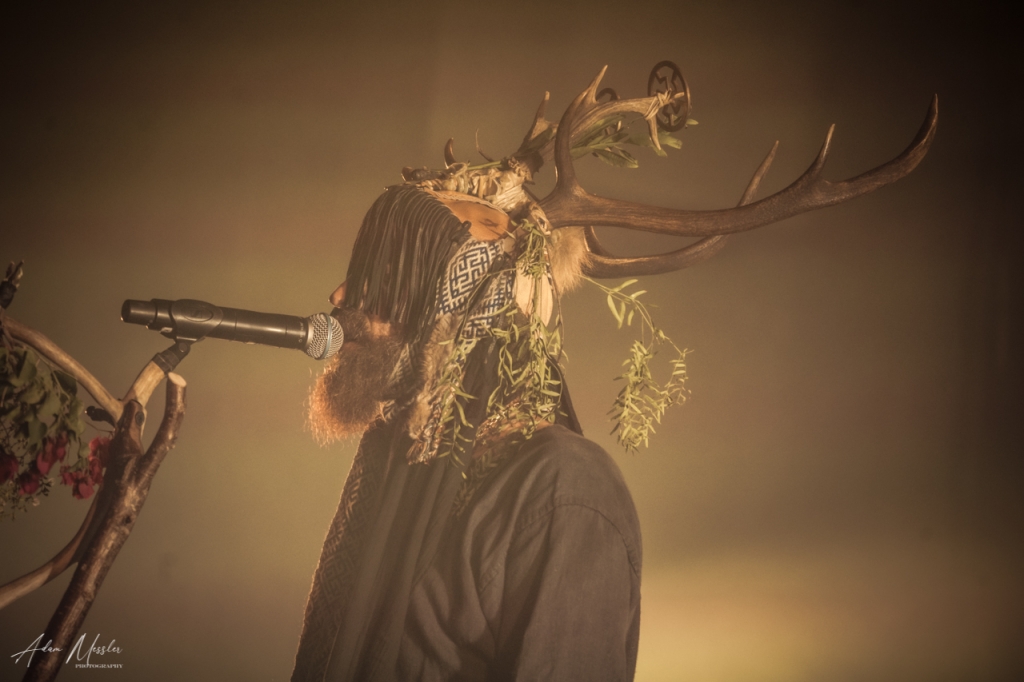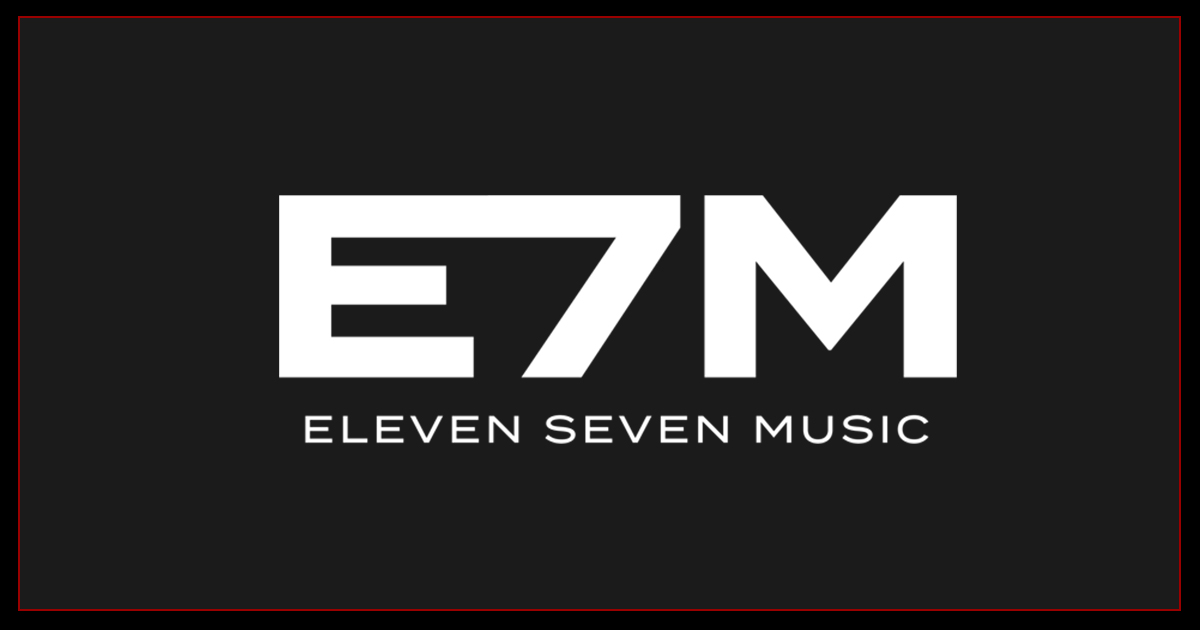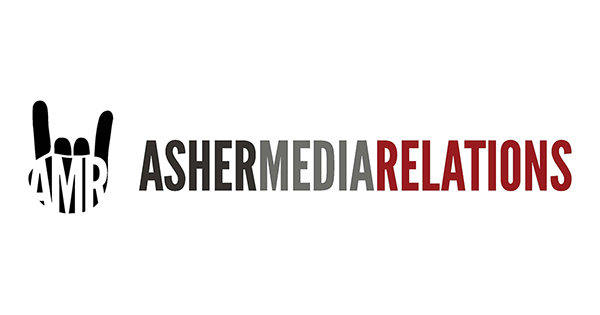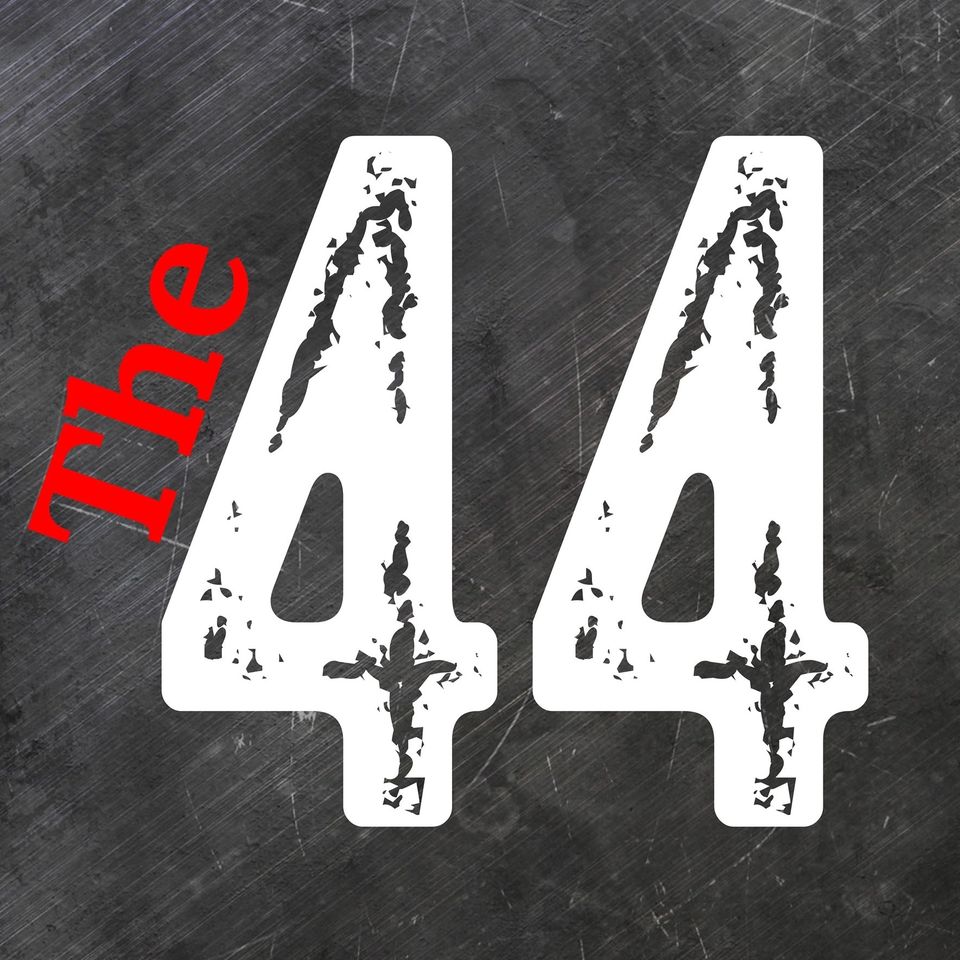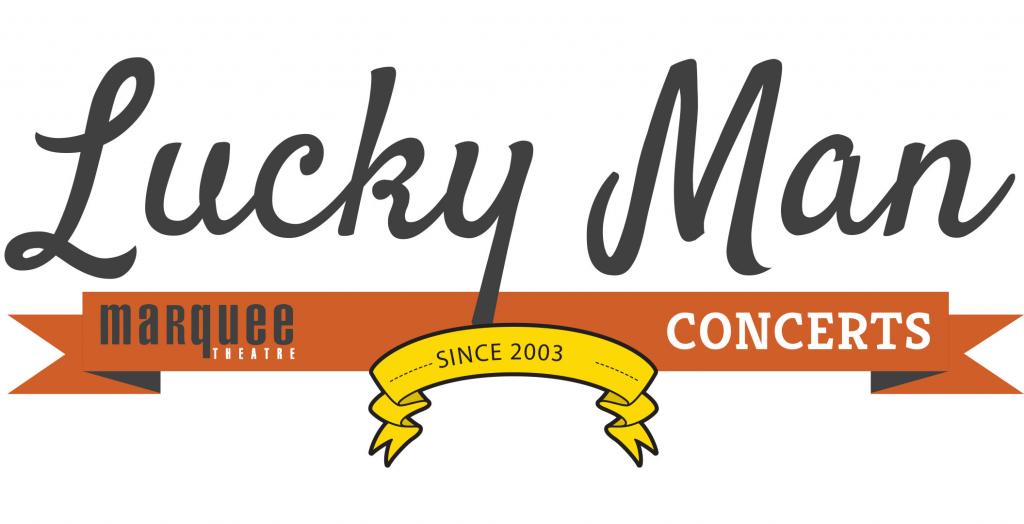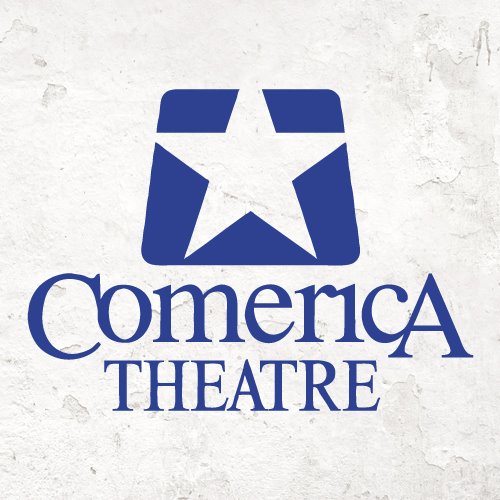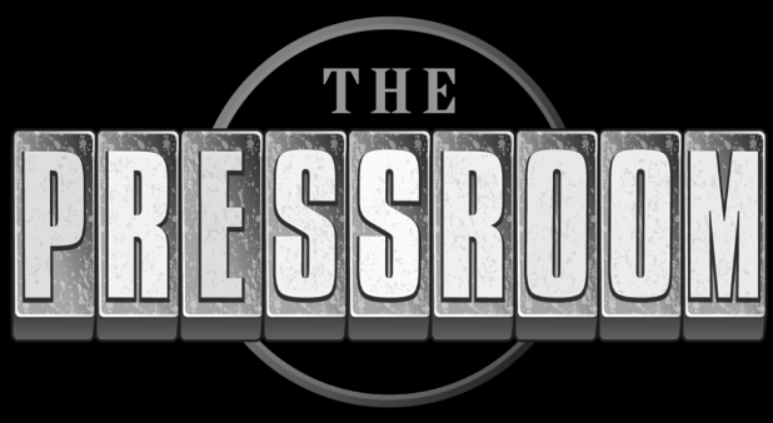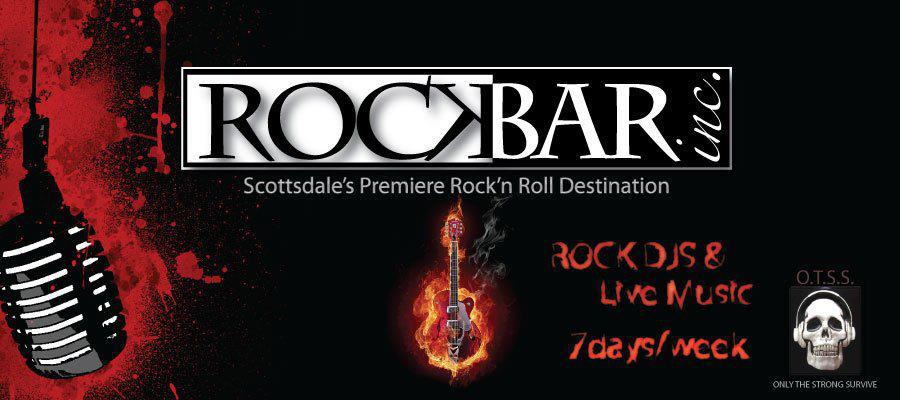Review By: Katt Bell
Photos By: Adam Messler
The first few moments of a Heilung performance makes you feel as if you’ve accidentally
encountered something you weren’t invited to, but weren’t excluded from, either. You just didn’t know
it was there until you found it. It seems to begin like any other show – the lights go down, and the roar of
uncountable conversations suddenly dies into a hiss of excited whispers over a deeper, anticipatory
silence. Someone appears on the stage, and there’s a general surge of noise from the audience. But in
this place, the sounds die down almost immediately, like campfire coals after you’ve poured water on
them. The heat it still there, but the noise and light are not.
I’m sitting in the gilded, historical Orpheum theater, but I’m no longer aware of gilding or
history. It feels like I’m somewhere much older than this building, and something much more primordial
than a show. I’ve accidentally stumbled across something ancient, and I’m captivated by it. I’m not quite
sure why I feel like I need to stay so still and quiet, but what happening in front of me is so compelling
that I don’t want to disrupt it. It’s rich with significance that I can feel, and even though they can’t
possibly see or hear me, I still feel like a whisper would interrupt it.
This is exactly why Heilung shows are so often described as a ritual. It’s also the moment where
they really begin to reveal their mastery of the stage.
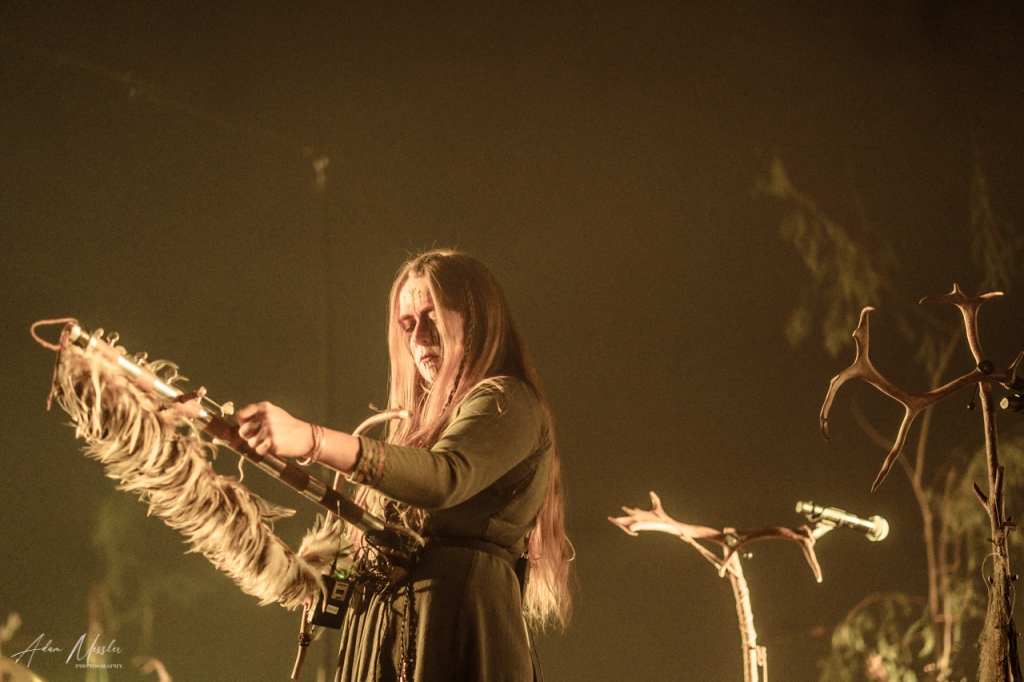
They retain almost complete control over the audience during the entire show. We, the
watchers, have our role in this performance, too, and they guide us through it. We know when we are
only watching all of them from the outside, we know when we are inside watching with some of them,
and we know when we are all supposed to participate. They never speak directly to us, because they
don’t need to. They speak with body language that is so simple and atavistic that we already understand
what they’re telling us.
A less obvious aspect of that mastery is the way that the lead role isn’t limited to one or two
people. While most performance groups will have one or two members who naturally stand out, Heilung
gathers that energy into a collective and uses it to tell the story. While there are obviously central
figures in the story, they are roles, not leads. Stunningly unique vocals drive the show, but the roles are
made central by the overall performance, instead of being defined by the ego or personal charisma of
the individual. The center of the performance shifts from member to member. Sometimes it’s focused
solely on one person, sometimes split between two or more, and sometimes it’s dispersed so
thoroughly across the entire stage that your eyes skip from place to place, trying to decide what to
watch.
Another interesting aspect of the performance is their portrayal of gender roles entirely
separate from biological sex or sexuality. Without going too deeply into the history of any culture, in
many times and many places it was perfectly acceptable for someone born as one gender to take up the
role of the opposite. I knew that, but that concept is so perfectly integrated and normalized within the
performance that I never saw it. I didn’t even think about it until someone nearby made a sudden
exclamation about a performer’s anatomy. After reading earlier reviews and talking to other people at
this show, I wasn’t alone. The details aren’t necessary – it should either be overlooked or come as a
sudden revelation or afterthought, like the rest of us had.
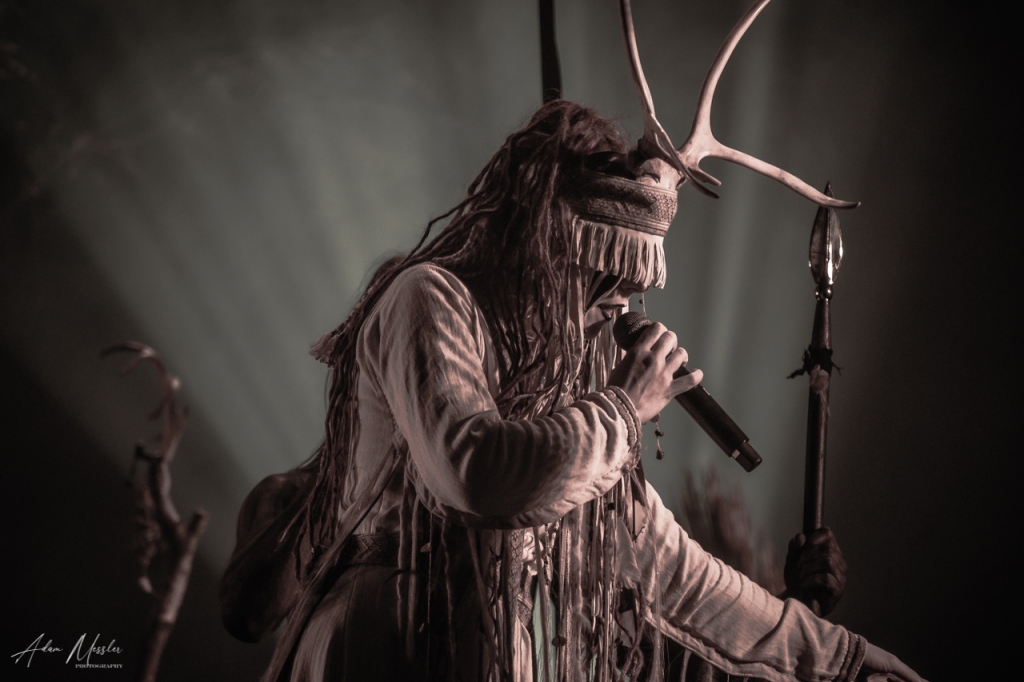
It’s appropriate for Heilung’s overall concept, which spans a wide range of history, literature,
traditional sounds and cultural concepts, blended seamlessly with modern theatrical and musical
engineering. Each separate piece seems relatively simple in itself – a drum, a light bank, a spear, a microphone, a performer taking a step – but they’re woven together so skillfully that focusing one just
one thing for too long means you’re missing the point. If you focus on one performer taking a series of
steps, you miss the fact that the entire troupe is weaving a pattern on stage, or setting themselves up
for the next part of the story. You’ll be lost for a second, and probably half blind, when the lights
suddenly change to the next scene, or you won’t realize that every performer is now suddenly engaged
in their own performance because you were watching just one of them.
For me, that was the moment one of the drummers lost the head off his mallet. I have a few
decades of experience doing live performances, and while I hate to see anything go wrong for anyone on
stage, I have to admire a flawless recovery. It’s an underappreciated art form, because you can only
appreciate it after it’s happened to you. I didn’t see how he recovered, because that mallet head was
silhouetted for one second before the backlights came up and blinded me, but I could hear that drum,
and if he missed a beat, I couldn’t tell.
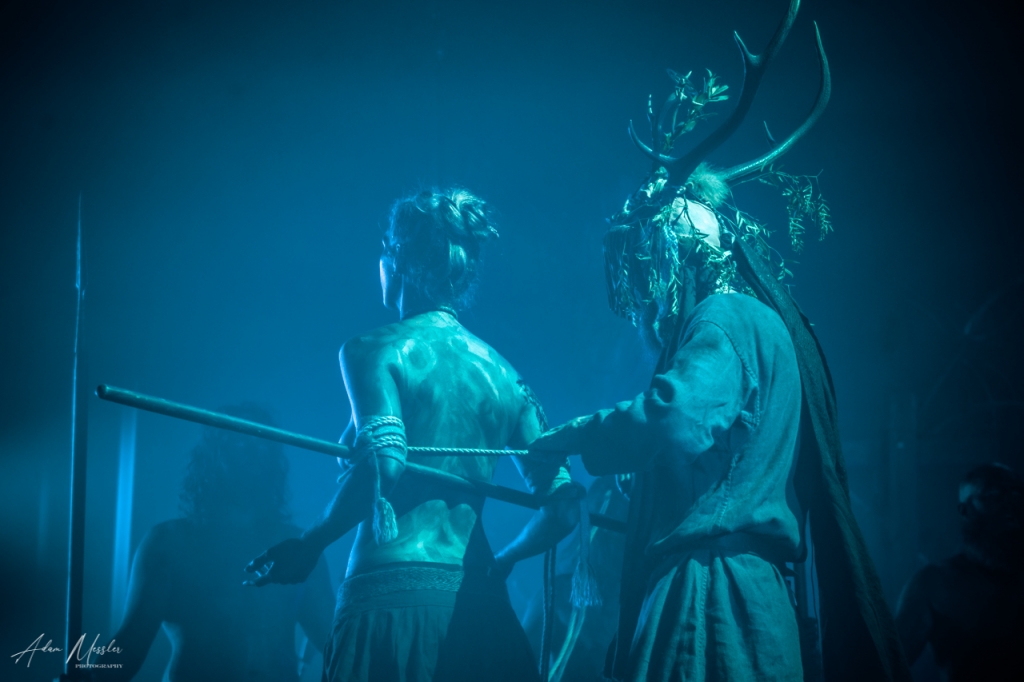
Even though Heilung puts on a performance based on both sight and sound, I would encourage
those with hearing challenges to come to a show. The music is heavily percussive and much of it can be
felt as much as heard, particularly in a small setting, and the visuals tell the story much as the vocals do.
While the vocals stand alone and don’t need the visuals, Heiling is one of the rare acts where the reverse
also stands true.

